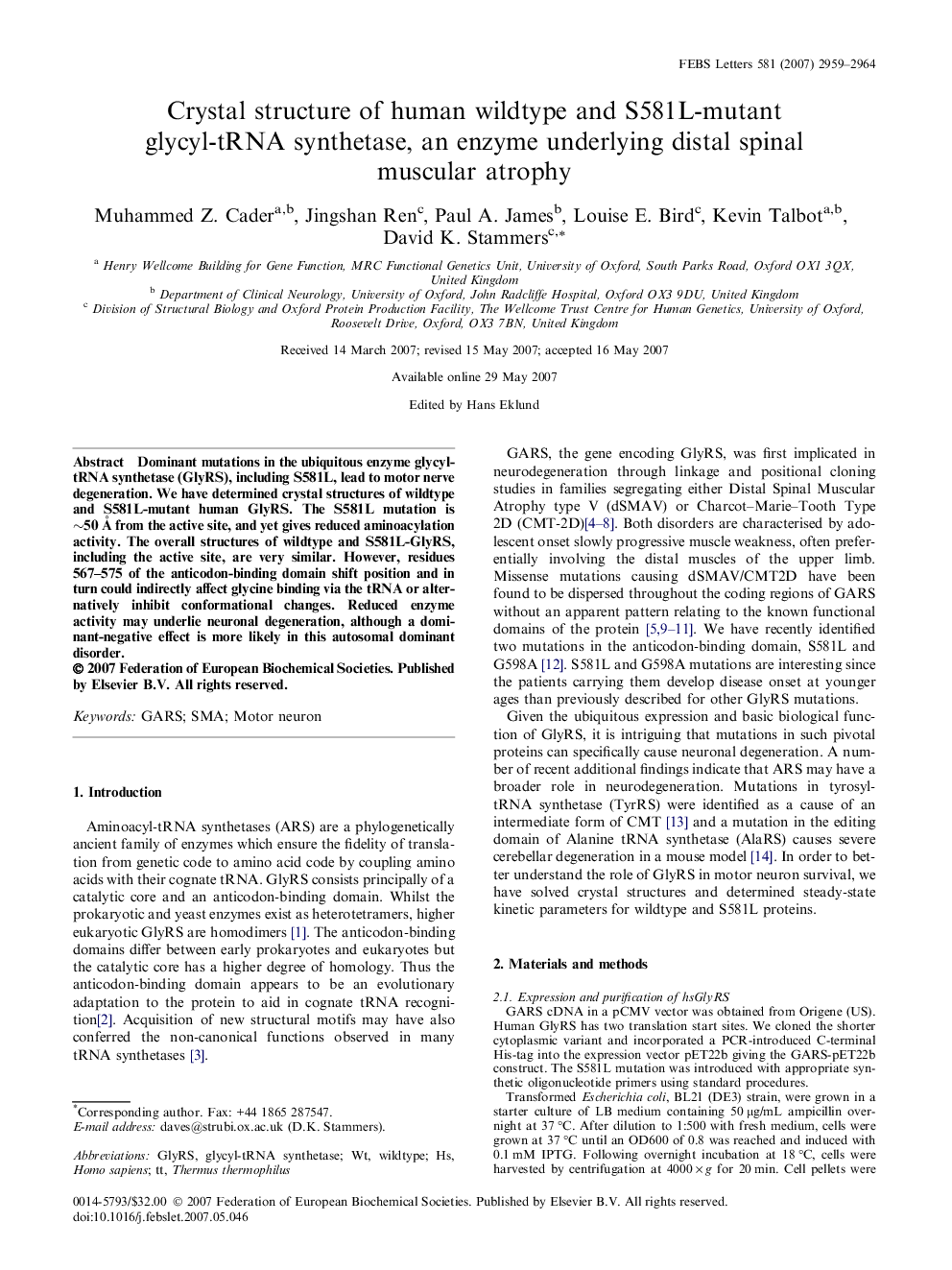| Article ID | Journal | Published Year | Pages | File Type |
|---|---|---|---|---|
| 2050981 | FEBS Letters | 2007 | 6 Pages |
Abstract
Dominant mutations in the ubiquitous enzyme glycyl-tRNA synthetase (GlyRS), including S581L, lead to motor nerve degeneration. We have determined crystal structures of wildtype and S581L-mutant human GlyRS. The S581L mutation is ∼50 Å from the active site, and yet gives reduced aminoacylation activity. The overall structures of wildtype and S581L-GlyRS, including the active site, are very similar. However, residues 567–575 of the anticodon-binding domain shift position and in turn could indirectly affect glycine binding via the tRNA or alternatively inhibit conformational changes. Reduced enzyme activity may underlie neuronal degeneration, although a dominant-negative effect is more likely in this autosomal dominant disorder.
Keywords
Related Topics
Life Sciences
Agricultural and Biological Sciences
Plant Science
Authors
Muhammed Z. Cader, Jingshan Ren, Paul A. James, Louise E. Bird, Kevin Talbot, David K. Stammers,
